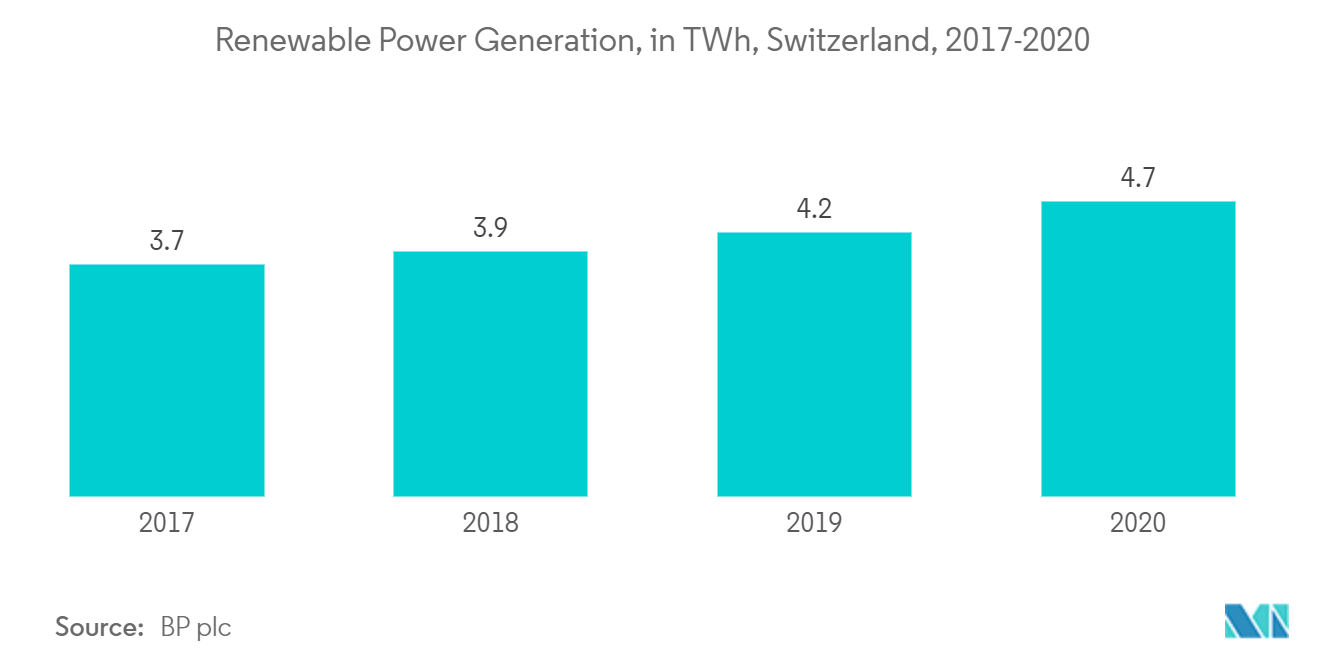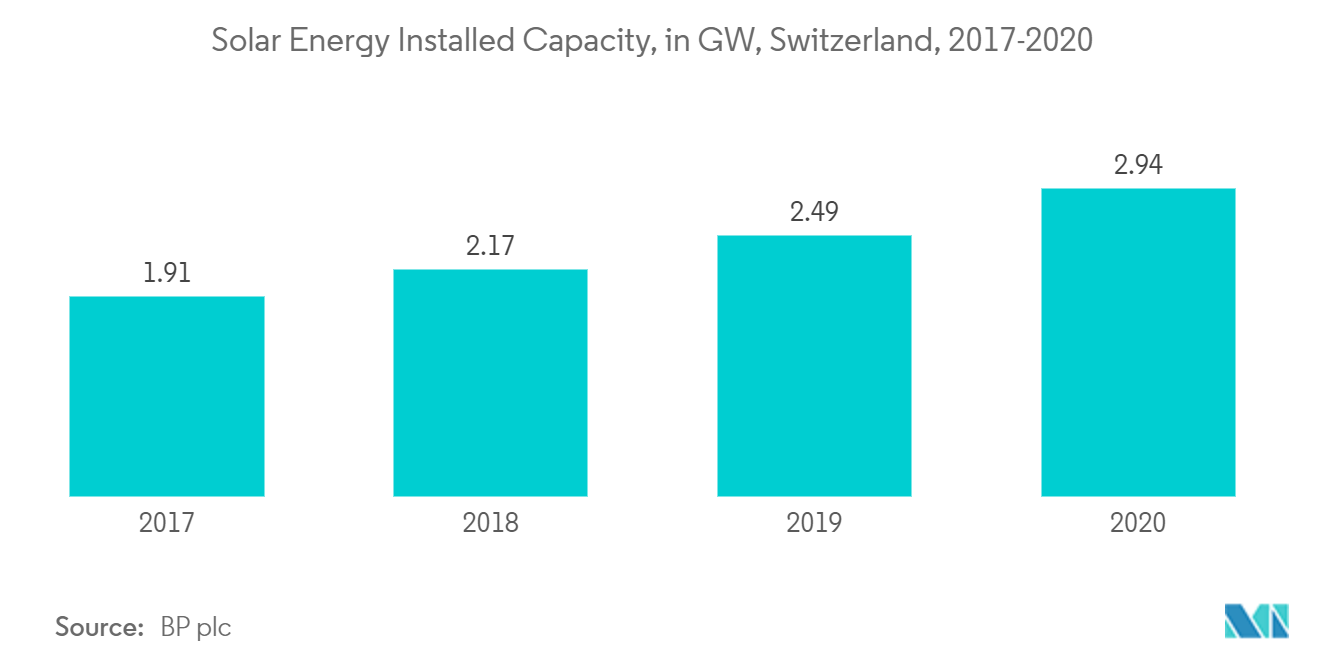Market Trends of Switzerland Solar Energy Industry
This section covers the major market trends shaping the Switzerland Solar Energy Market according to our research experts:
Solar Photovoltiac (PV) to Dominate the Market
- The thin-film photovoltaic module is considered a breakthrough in solar technology and rapidly increases its solar power sector share. Thin-film solar cells include amorphous silicon (a-Si), cadmium telluride (CdTe), and gallium selenide (CIGS) cells.
- According to Switzerland's intended nationally determined contributions, the country aims to reduce greenhouse gas emissions by 50% by 2030 compared to the 1990 levels.
- The Swiss government plans its climate policy at intervals of 10 years and has formulated the goals to reduce carbon emissions by 75% to 85% by 2050. Additionally, the Swiss government aims to reduce per capita emissions to 1t CO2 by 2050. In line with the renewable energy targets, power generation from renewable energy sources increased by 1 TWh from 3.7 TWh in 2017 to 4.7 TWh in 2020.
- In November 2020, the Swiss government revised its CO2 Act, through which the use of thermal fuels is taxable. The Swiss Federal Council recommended further amendments to the Act and issued a referendum. In June 2021, the Swiss population rejected the modifications through a general voting system.
- Some of the amendment's primary goals were the imposition of higher taxes on the use of thermal fuels in the residential and aviation sectors. The tax obtained from the new amendment was primarily aimed at being returned to the public, while the remaining would have been added to the climate fund.
- Such initiatives by the Swiss government to reduce carbon emissions are expected to propel the growth of solar energy in Switzerland during the forecast period.

Declining Prices and Installation Cost of Solar PV are Driving the Market Demand
- Solar photovoltaic (PV) modules are over 80% cheaper than in 2009. The cost of electricity from solar PV fell by almost three-fourths between 2015-2019 and continues to decline with technological development and mass production.
- The cost reductions are driven by continuous technological improvements, including higher solar PV module efficiencies. The industrialization of these highly modular technologies has yielded impressive benefits from economies of scale and greater competition to improved manufacturing processes and competitive supply chains.
- The rapid decline in installed costs and high capacity factors have improved the economic competitiveness of solar PV. The global weighted average LCOE of utility-scale PV plants is estimated to have fallen by 82% between 2010 and 2019, from around USD 0.37 to USD 0.06/kWh.
- In 2021, the average selling price of solar PV modules was around USD 0.19 per watt, decreasing by nearly 68% compared to 2015. On the other hand, the selling price of multi-crystalline modules fell to USD 0.21 per watt in 2021 from USD 0.4 per watt in 2018.
- The rapid decline in costs has led to increased solar capacity in installations across the country. Solar capacity installations grew by 53.9% between 2017 and 2020 to 2.94 GW.
- With the upcoming utility-scale project and supportive policies and subsidies, the Swiss solar energy market is expected to witness significant growth over the forecast period.

